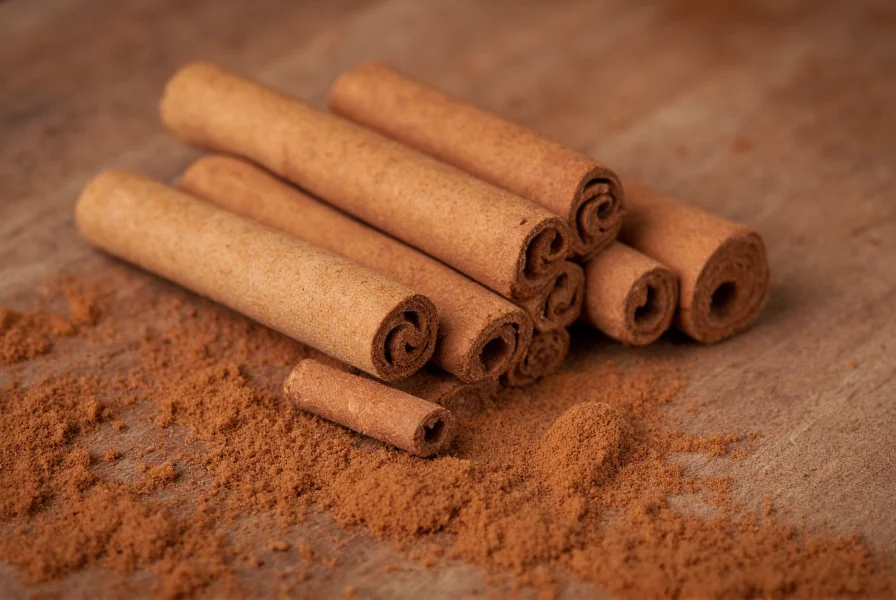Many people enjoy cinnamon for its warm flavor and potential health benefits, but exceeding recommended amounts can lead to serious health consequences. Understanding the difference between cinnamon varieties and their safety profiles is crucial for enjoying this popular spice responsibly.
Understanding Cinnamon Varieties and Their Risks
Cinnamon comes in several varieties, but two types dominate the market: Cassia cinnamon (the most common and affordable type found in supermarkets) and Ceylon cinnamon (often labeled as "true cinnamon"). The key difference affecting safety is their coumarin content.
Coumarin is a naturally occurring compound that can cause liver damage when consumed in large quantities over time. Cassia cinnamon contains significantly higher levels of coumarin compared to Ceylon cinnamon:
| Cinnamon Type | Coumarin Content (per teaspoon) | Maximum Safe Daily Intake |
|---|---|---|
| Cassia cinnamon | 7-18 mg | ~1 teaspoon (2.5g) |
| Ceylon cinnamon | 0.04-0.14 mg | ~2.5 teaspoons (6g) |
The European Food Safety Authority recommends a maximum daily coumarin intake of 0.1 mg per kilogram of body weight. For a 150-pound (68 kg) adult, this translates to approximately 6.8 mg of coumarin daily.

Symptoms of Cinnamon Overconsumption
Consuming too much cinnamon can cause both immediate and long-term health effects. Acute symptoms of cinnamon overdose may include:
- Burning sensation in the mouth and throat
- Nausea and digestive discomfort
- Dizziness or lightheadedness
- Increased heart rate
- Drop in blood sugar levels (particularly concerning for diabetics)
- Allergic reactions in sensitive individuals
Long-term excessive consumption, especially of Cassia cinnamon, can lead to:
- Liver damage or dysfunction
- Increased bleeding risk due to blood-thinning effects
- Potential interactions with diabetes medications
- Respiratory issues when inhaling cinnamon powder
Who Should Be Particularly Cautious?
Certain populations face higher risks from excessive cinnamon consumption:
- People with liver conditions - Those with pre-existing liver disease should avoid Cassia cinnamon entirely due to coumarin content
- Diabetics - Cinnamon can lower blood sugar, potentially causing dangerous interactions with diabetes medications
- Pregnant and breastfeeding women - Limited research on safety at high doses during pregnancy
- Children - Their smaller body size means lower safe consumption limits
- Individuals taking blood thinners - Cinnamon may enhance blood-thinning effects
What to Do If You've Consumed Too Much Cinnamon
If you've accidentally consumed excessive cinnamon, here's what to do:
- Stop consuming additional cinnamon immediately
- Drink water to help dilute and flush the cinnamon from your system
- Eat something to help absorb the cinnamon and reduce irritation
- Monitor for symptoms like mouth irritation, nausea, or dizziness
- Contact a healthcare provider if you experience severe symptoms or have consumed very large amounts
For chronic overconsumption (regularly exceeding safe limits), consult your doctor for liver function testing, especially if using Cassia cinnamon regularly.
Practical Tips for Safe Cinnamon Consumption
To enjoy cinnamon safely while reaping its potential health benefits:
- Choose Ceylon cinnamon when possible, especially for regular or therapeutic use
- Limited Cassia cinnamon to no more than 1 teaspoon daily for most adults
- Be cautious with cinnamon supplements, which often contain concentrated amounts
- Avoid the "cinnamon challenge" which can cause serious respiratory issues
- Check ingredient labels on processed foods that may contain hidden cinnamon
- Consult your healthcare provider before using cinnamon therapeutically
Cinnamon in Context: How It Compares to Other Spices
While cinnamon requires moderation, it's worth noting that many spices have upper consumption limits. Unlike some spices that become merely unpleasant when overused, cinnamon's risks are primarily related to specific compounds (coumarin in Cassia) rather than the spice itself being inherently dangerous at culinary doses. When used appropriately, cinnamon remains a safe and potentially beneficial addition to your diet.











 浙公网安备
33010002000092号
浙公网安备
33010002000092号 浙B2-20120091-4
浙B2-20120091-4